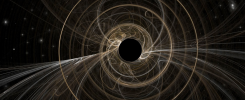March 2023
HESS J1809–193 is a gamma-ray source known since many years: it was first detected as part of the H.E.S.S. Galactic Plane Scan, and its discovery was published in 2007 [1]. Initially, it has been interpreted as a pulsar wind nebula (PWN), associated with the energetic pulsar PSR J1809–1917. In this “leptonic” scenario, the gamma-ray emission is due to high-energy electrons originating from the pulsar wind. Indeed, an X-ray PWN around PSR J1809–1917 was detected shortly after the discovery of HESS J1809–193 [2], giving further support for this hypothesis. Possible contributions to the gamma-ray emission from a second nearby pulsar, PSR J1811–1925, were also discussed at the time (see [3] and the January 2009 SOM). However, also several supernova remnants (SNRs) are present in the region. In particular, the SNR G011.0−00.0 is located close to the peak of the gamma-ray emission. Together with the discovery of dense molecular clouds close-by, this has led several authors to propose a “hadronic” scenario, in which the gamma rays are created in interactions of cosmic-ray nuclei – accelerated at the SNR shock fronts, for instance – with the molecular gas [4,5,6]. HESS J1809–193 has recently also been detected with the HAWC gamma-ray observatory above energies of 56 TeV [7], making the source even more interesting. On Feb 28, 2023 the H.E.S.S. Collaboration has published a new study of HESS J1809–193, with the aim of shedding more light on this mysterious gamma-ray source [8].

The new analysis uses more than twice as much data compared to previous studies, and employs the open-source Gammapy package to perform a sophisticated three-dimensional likelihood analysis of the data. Thanks to this, we were able for the first time to resolve the gamma-ray emission from HESS J1809–193 into two distinct components, which are both illustrated in the flux map shown in Fig. 1. The larger-scale component A, shown in green, appears elongated with a (Gaussian 1-sigma) extent of ~0.62°×0.35°. Component B on the other hand, shown in purple, describes the bright peak of the emission and is more compact, with a 1-sigma radius of ~0.1°. This two-component model of the source is preferred with respect to one in which, for example, the emission is described with a single component that changes its size with energy. The zoomed-in map in Fig. 1b) shows that component B is located close to the X-ray PWN, but also coincides with the edge of SNR G011.0–00.0 and several dense molecular clouds as traced by CO and CS emission. In Fig. 2, we show the energy spectra of the two components of HESS J1809–193, together with other measurements in the TeV energy range. The spectrum of component A seems to be slightly steeper than that of component B, and exhibits a cut-off at ~10-20 TeV. For component B, on the other hand, we find no significant preference for a cut-off.

We have modelled the gamma-ray emission in a leptonic PWN scenario, invoking three different electron populations of different ages, each connected with a specific component of the system: (i) “relic” electrons, injected over the full life time of the system, and associated with the extended component A; (ii) “medium-age” electrons, injected within the last 4.7 kyr and associated with the compact component B; (iii) “young” electrons, injected over the last 1.2 kyr and associated with the X-ray PWN. The relic electrons are thought to have escaped the PWN itself, now forming a halo around it. Fig. 3 shows the best-fit model curves for each of the populations, together with the H.E.S.S. measurements, Fermi-LAT results (also derived as part of the newly published result), X-ray data from Suzaku, and published results from the literature. While the model is able to explain the H.E.S.S. and X-ray data well, it fails to describe the Fermi-LAT flux points below ~10 GeV. This is all the more puzzling as in terms of the spatial morphology, the emission detected with Fermi-LAT is comparable to that of the extended H.E.S.S. component A.

The PWN model, however, is not the only possible interpretation of our results. In fact, the spatial coincidence of the compact component B with the edge of the SNR and the molecular clouds suggests that this component could be due to hadronic interactions of cosmic-ray nuclei rather than electrons – this is also viable in terms of the required energetics. For component A, on the other hand, a comparison of the gamma-ray emission with the distribution of gas throughout the region suggests that a hadronic origin of the emission is not favoured.
In summary, while our new analysis has indeed led to important new insights about HESS J1809–193, the source still presents us with some riddles yet to be solved…
References
[1] F. Aharonian et al. (H.E.S.S. Collaboration), Discovery of two candidate pulsar wind nebulae in very-high-energy gamma rays, Astronomy & Astrophysics 472, 489-495 (2007)
[2] O. Kargaltsev & G. G. Pavlov, X-Ray Emission from PSR J1809–1917 and Its Pulsar Wind Nebula, Possibly Associated with the TeV Gamma-Ray Source HESS J1809–193, Astrophysical Journal 670, 655 (2007)
[3] M. Renaud et al., Pulsar Wind Nebula candidates recently discovered by H.E.S.S., AIP Conference Proceedings 1085, 285 (2008)
[4] G. Castelletti et al., Unveiling the origin of HESS J1809–193, Astronomy & Astrophysics 587, A71 (2016)
[5] M. Araya et al., GeV Emission in the Region of HESS J1809–193 and HESS J1813–178: Is HESS J1809–193 a Proton PeVatron?, Astrophysical Journal 859, 69 (2018)
[6] F. Voisin et al., Connecting the ISM to TeV PWNe and PWN candidates, Publications of the Astronomical Society of Australia, 36, e014 (2019)
[7] A. U. Abeysekara et al. (HAWC Collaboration), Multiple Galactic Sources with Emission Above 56 TeV Detected with HAWC, Physical Review Letters 124, 021102 (2020)
[8] F. Aharonian et al. (H.E.S.S. Collaboration), HESS J1809–193: a halo of escaped electrons around a pulsar wind nebula?, accepted for publication in Astronomy & Astrophysics (2023)

